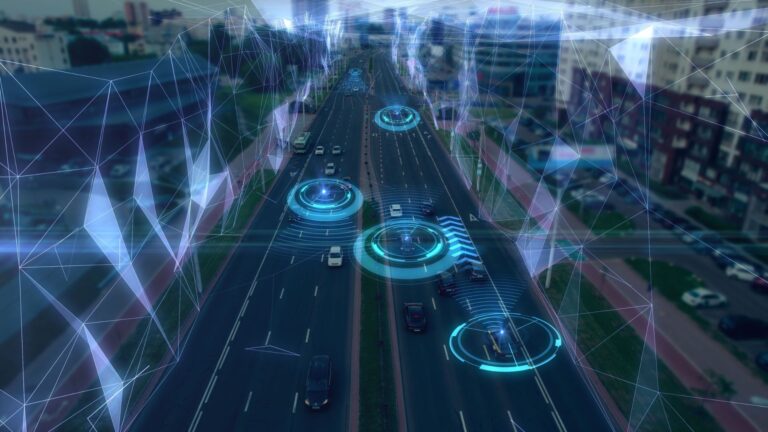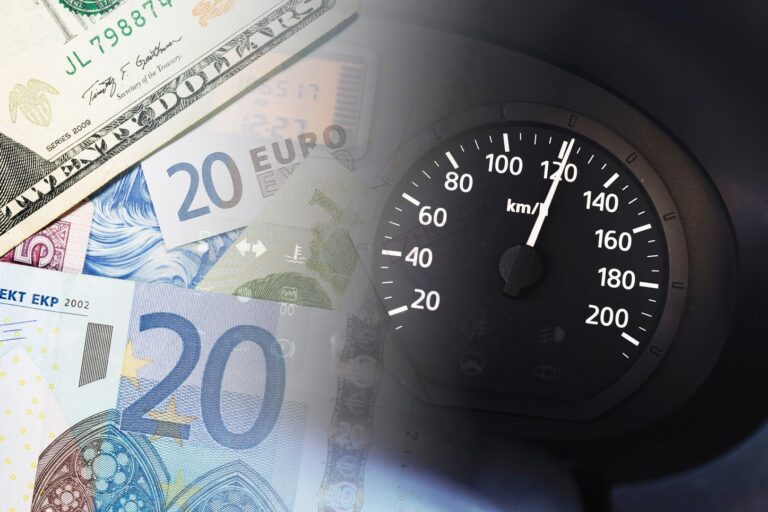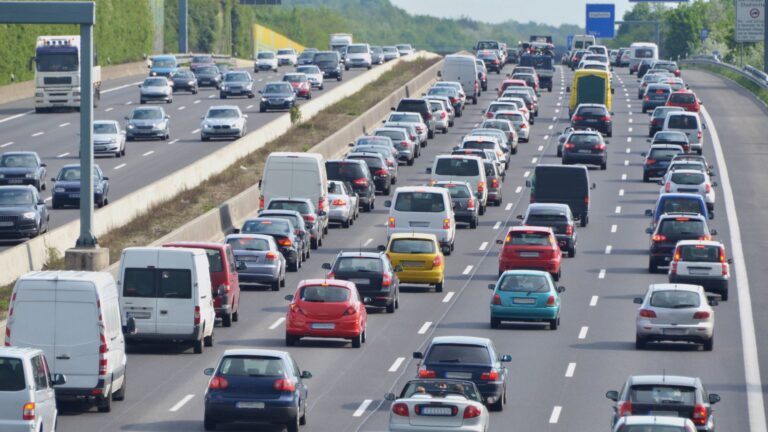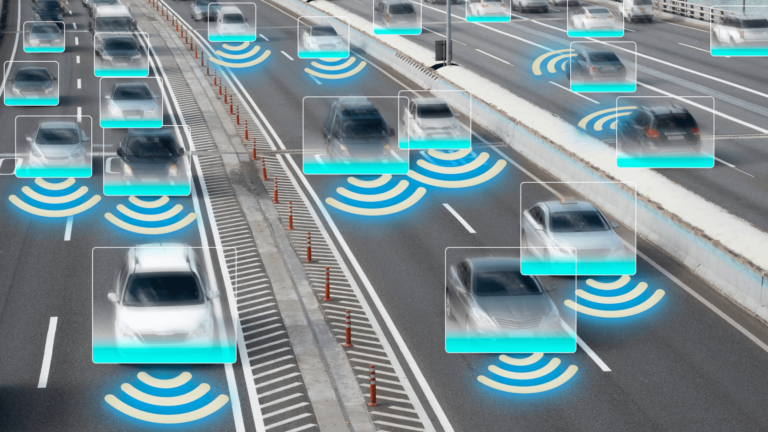Smart cities are evolving, and so are the rules and tools that keep them safe. In 2025, enforcement is shifting rapidly from reactive citation issuance to proactive prevention. Let’s take a deeper look at five major trends reshaping traffic safety across North America and Europe.
1. AI-Driven Seatbelt & Phone-Use Detection
First piloting in the UK, AI-powered cameras are now detecting seatbelt non-compliance and mobile phone use. A 2021 trial recorded nearly 7,000 seatbelt violations and 25,000 mobile phone violations in just six months.
Similar technologies are being rolled out using VITRONIC hardware, which Elovate employs in the U.S. and Canada. VITRONIC’s latest AI-enabled enforcement systems use high-resolution imaging and machine learning to identify these high-risk behaviours in real-time. While wide-scale enforcement of such violations is still in early development across North America, the Republic of Cyprus has already moved forward in targeting these behaviours through its national enforcement program.
In Cyprus, VITRONIC’s POLISCAN FM1 systems — deployed across the island by Elovate —are being used to detect and process seatbelt and mobile phone violations, alongside speed and red-light offenses.
Meanwhile, in Australia, Acusensus’s ‘Heads-Up’ technology has been credited with reducing distracted driving fatalities during its pilot phase that began in 2019, with further expansions happening throughout 2025. Gathering early results and public feedback, initial data shows promising reductions in high-risk behavior, particularly in school zones and along high-traffic commuter routes.
Why it matters: Enforcing seatbelt and phone use boosts safety instantly. The use of seatbelts halves fatality risk, while phones behind the wheel remain a fast-growing cause of crashes.
2. Intelligent Speed Assistance (ISA) for High-Risk Drivers
ISA systems prevent vehicles from exceeding the posted speed limit. As of July 2024, the EU has mandated ISA in all new vehicles. Some U.S. states, including New York and California, are piloting ISA programs for high-risk drivers.
Why it matters: ISA embeds safety directly into the vehicle, reducing fatal collisions and supporting Vision Zero goals.
3. Automated HOV / Bus-Lane Enforcement Cameras
California is currently piloting camera-based enforcement in HOV (High-Occupancy Vehicle) lanes, particularly on Bay Area highways like Highway 101, to detect single-occupant violations. While these pilots are not yet issuing citations, they are gathering accuracy data in preparation for potential enforcement rollout.
In Massachusetts, a new law passed in April 2025 allows the MBTA and MassDOT to install bus-mounted cameras that automatically flag and fine drivers who block bus lanes or stop zones. These systems are expected to launch citywide by fall and are designed to improve transit flow and accessibility.
Why it matters: Automated systems ensure priority lanes work as intended, improving mobility for transit users and reducing delays caused by lane misuse.
4. AI-Augmented Red-Light & Speed Enforcement
The U.S. is slowly catching up to Europe when it comes to AI-powered red-light and speed enforcement. While many North American programs are still in early stages, the shift is well underway, driven by public demand for safer streets, consistent and unbiased enforcement, and rapid advances in technology. AI is now being used not only for issuing citations, but also for identifying high-risk behaviors and enabling smarter, preventive deployments before crashes happen.
Elovate is in the process of rolling out AI and is already using machine learning-enabled enforcement solutions designed to identify high-risk behavior, support proactive deployments, and improve accuracy. These systems are built to learn from violation patterns over time, helping agencies make smarter decisions about where and how enforcement is needed most.
New guidance from organizations like the Governors Highway Safety Association (GHSA) is also encouraging smarter, more standardized, transparent deployment of automated enforcement nationwide.
Why it matters: By combining machine learning with traditional traffic enforcement, AI promotes both precision and fairness, freeing up law enforcement to focus on urgent, high-impact issues while supporting safer outcomes for all road users.
5. Smart Infrastructure & Connected Vehicles
The EU is advancing cooperative Intelligent Transport Systems (C-ITS), connecting vehicles and road infrastructure. Systems like eCall and real-time hazard alerts are currently being implemented.
In the U.S., researchers and transportation agencies are exploring how future 6G networks and AI technologies can support connected vehicle ecosystems, enable real-time hazard alerts, and prioritize emergency vehicle access. These efforts are part of early-stage development frameworks aimed at reducing response times and enhancing predictive traffic management.
Why it matters: Shifting from enforcement to prevention, these systems aim to prevent crashes before they happen.
Policy Trends: From Enforcement to Trust-Building
Across North America, enforcement strategies are shifting toward even greater transparency, education, and public accountability:
- The Bipartisan Infrastructure Law (2021) now allows up to 10% of federal Highway Safety Improvement Program (HSIP) funds to support automated enforcement, enabling more cities to pilot safety-focused programs.
- States like Illinois are revising speed-camera legislation to improve transparency and public confidence. New rules require safety-zone cameras to operate only during specified hours, and signage must be posted 30 days before any violations are recorded. Local authorities are also required to conduct and publish safety impact reports every two years, making enforcement data accessible and accountability driven.
- More cities are integrating camera technology into Vision Zero plans, using it not only to issue citations but to proactively identify and address high-risk areas. For example, in Philadelphia, PA automated enforcement has been a core element of their Vision Zero strategy, particularly in reducing dangerous driving behaviors along high-injury corridors.
What This Means for 2025
- Enforcement is smarter: Cameras now detect more than speed.
- Cars are co-pilots: Speed assistance, detection, and automation improve compliance.
- Policy supports tech: Laws are catching up to innovation, with transparency leading the way.
Looking Ahead
2025 isn’t just about new tools, it’s about a new mindset. Enforcement is evolving into a broader mission: proactive safety, equitable access, and smarter streets. Whether it’s AI, infrastructure, or vehicle design, the future of traffic safety is being built right now.






